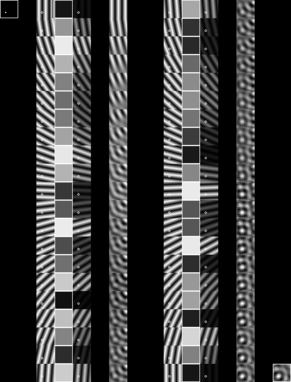BACK PROJECTION ALGORITHM
Back projection basically projects each detected photon back from the detector through the slits of the grid pairs to all possible locations for its origin on the Sun. This creates a probability map made up of parallel ridges aligned with the slit orientation at that time. The spacing between ridges is equal to twice the FWHM resolution of the subcollimator. This back projection is repeated for each detected photon and the resulting probability maps are summed to form the so-called dirty map.
Back projection is the default image algorithm in the image object.
The back projection algorithm uses the ANNSEC coordinate system internally.
Using the Back Projection algorithm at the command line:
Select algorithm | o->set, image_algorithm='bproj' | or 'bprojection' or 'back projection' or 'hsi_bproj' |
|---|---|---|
Object Class | HSI_BPROJ |
|
Create Object | bproj_obj = hsi_bproj() | Creates a stand-alone object |
Extract Object | bproj_obj = o->get(/obj,class='hsi_bproj') | Extract the object used in the hsi_image object, o |
Parameter Prefix | Back Projection has no algorithm-specific parameters. |
|
Parameter Table | Back Projection has no algorithm-specific parameters. |
|
Demonstration of Back Projection
These two figures show the back projection image being built up as the spacecraft turns through a full rotation for two different pitch grids - 5 arcsec and 10.5 arcsec. Click the figure to see a bigger version.
The simulated point source is shown in the top left, and also as a small circle on each image. The final reconstructed image is shown in the bottom right. Each column group shows one half a rotation (~2 seconds) with the four columns in the group showing
- the probability map of where the photons could have originated (white=highest probability); the stripes result from the transparent slits and opaque slats of the grid,
- the integrated X-ray intensity,
- same as column 1, but weighted by column 2, and
- the continuously building sum of the weighted probability distributions which, after the full rotation, is the final image.





